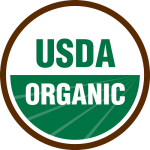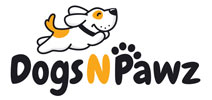Aside from the legal requirements for labelling on dog food packaging, there are often other confusing or unclear terms on your favourite dog food. Pet food labelling is regulated at the federal and state level. The FDA reviews some of those ambiguous claims on packaging, like “maintains urinary tract health” or “hairball control”.
The Association of American Feed Control Officials (AAFCO), which is an organization of state and federal regulators, “develops model pet food regulations for states to adopt,” according to the Pet Food Institute. Some of those regulations include instructions for product claims you may have read before, like “human-grade”.
There can be other information on your bag or box of dog food. You may also see labelling or claims like:
Natural
Labelling Claims
Turkey Diet
(or other protein or protein combo)
What does it mean when your dog food says “turkey for dogs” or “turkey and salmon for dogs?”
If a dog food consists of very few ingredients and has a simple name like ‘Turkey for Dogs,’ the food must contain 95 per cent of that ingredient, not including water. If a dog food contains a protein blend and is called something like “Turkey and Salmon for Dogs” those two ingredients combined have to make up 95 per cent of the food.
The 95 percent rule is complicated by the addition of water to pet food. With water added, like it is in canned food, the protein named on the label needs to make up 70 per cent of the product.
“The first ingredient named in the product name must be the one of higher predominance in the product,” the U.S. Food & Drug Administration (FDA) states.
So read the ingredients. In a turkey and salmon combo, if turkey is listed in the product name first the food has to contain more turkey than salmon and should be reflected in the ingredients list.
Chicken Dinner
(or platter, or entre or formula)
What does it mean if my dog food has a word like entree, dinner, formula, or platter in its name?
If your dog food is called “chicken entree” for example, this means the named protein (chicken) needs to make up 25 percent of the overall ingredients. For products with added water, the food needs to contain 10 percent chicken. If there is more than one named ingredient (let’s say your food is called “chicken, beef, rice and sweet potato formula”) each of those ingredients make up at least three per cent of the total ingredients and total 25 per cent of the overall ingredients.
If it sounds mind bendy, it’s because it is. Food labelling is complicated! That’s why it’s always important to read the individual ingredient lists if your dog is a fussy eater or has allergies.
Chicken with Salmon
(or other protein combo or ingredient)
What does the word “with” a specific ingredient mean?
The word “with” on a pet food label means the ingredient is at least three per cent of the total ingredients. In other words, not a lot, but the manufacturer has still decided to call out that specific ingredient.
‘Dog food with herring’ means something different than ‘herring dog food.’ Herring dog food contains 95 percent herring. ‘With herring’ means the food contains a minimum of three per cent herring.

Chicken Flavor
(or other)
What does ‘flavor’ mean?
Maybe your dog loves his healthy dinner, complete with “beef flavor”. A product doesn’t need to contain much of an ingredient to use the word “flavor.” However if your dog food has beef flavor, there should be an ingredient like beef fat providing the flavor in the ingredient list.


High Protein/Lean/Low Fat/Reduced Calories/Light
(and variations)
What do light, reduced calorie, high protein and other similar descriptive phrases mean?
Words that reduce or increase something (like a fat or protein) means the product has been adjusted to provide a significant increase or decrease from a standard dog food or specific product from a brand, and deviates from the ‘complete and balanced’ fat and protein minimums provided by the AAFCO.
Food making any of these descriptive claims have to get a guaranteed analysis from a lab to ensure they have made reductions that support their claims.
Grain Free Formula
What is a grain-free formula?
Grain-free means the product does not contain corn, wheat, rice, soy, barley or other grains. This doesn’t mean the food is carbohydrate free: the ingredients list may show the product contains potato, sweet potato, green peas, legumes, lentils or tapioca. There are some concerns and ongoing research that suggests a grain-free diet isn’t healthy for dogs and leads to dilated cardiomyopathy.
Reduces Inflammation
(or improves joint function)
What do claims like “reduces inflammation” or “improves joint function” mean?
Dog foods often claim added benefits and may include claims that a specific food can reduce shedding, reduce inflammation, or improve joint function, or maintain urinary tract health.
The FDA’s Center for Veterinary Medicine (CVM) is responsible for regulating animal food and it allows for some “meaningful health” information to be printed on animal food under the Nutrition Labeling Education Act, as long as the manufacturer provides significant evidence that the claim is “truthful and not misleading,” according to the FDA. CVM reviews and accepts the claims before they appear on labelling.
In Canada, “health claims must comply with existing Canadian law with respect to drug claims. For example, the words “diagnose”, “cure”, “mitigate”, “treat” or “prevent disease” must not be used,” according to the federal government guidelines.
Vet Recommended
What does it mean if my dog food is “vet recommended”?
Dog food is allowed to say it is “veterinarian recommended”, “veterinarian formulated”, or “veterinarian developed” only if it can meet specific criteria set out by the AAFCO Pet Food Committee.
In theory, ‘veterinarian recommended’ means that a reasonable sample size of vets have been surveyed, and that the food manufacturer or distributor has documented the results. But the AAFCO doesn’t provide an official sample size or provide guidelines for what is a statistically sound pool of recommendations.
Dog owners who want more information on a specific food claiming to be vet recommended can visit the brand’s website or contact its customer service department for more information about the number of vets involved in recommending a food.
Vet formulated or vet developed only requires one vet to support a food and allow this designation to appear on a food label.
Dog food can never be called “veterinarian approved” because only state regulatory agencies are allowed to approve food. This could be considered a false or leading marketing claim.
Human-Quality or Human-Grade
My dog food is human-grade. Is it safe for me to eat?
Human-grade or human-quality have “no legal definition,” according to the AAFCO.
Those terms suggest that a dog food is edible by people. People don’t generally consider pet food edible due to aesthetics, smell, taste or texture. While a pet food may include an ingredient humans can eat, like chicken, the minute it is mixed with an ingredient humans can’t eat, it is no longer human-quality — in other words, edible for people.

Some brands may use this terminology to communicate quality: if it’s good enough for people, it’s good enough for dogs. But to be truly human-quality, meaning edible, the food has to be produced under federal regulations on food for humans, more specifically, the USDA’s Current Good Manufacturing Practice in Manufacturing, Packaging or Holding Human Food regulation. Safest best is to not eat your dog’s food. He or she probably doesn’t want to share anyway.
Premium, Super Premium, Ultra Premium
What does premium, super premium, ultra premium and gourmet mean when applied to food and treats?
The short answer is that those words may not mean anything, nutritionally speaking.
According to the FDA
Foods with those superlatives aren’t “required to contain any different or higher quality ingredients, nor are they held up to any higher nutritional standards than are any other complete and balanced products.”
This is where ingredient label reading comes into play. As a dog owner, you may need to investigate why a specific brand labels its product with any of those words, which are subjective and relative to a specific brand.
Some food may be called premium because it has limited ingredients, while others may be called premium because the product is produced in small batches. Food producers may use some of these descriptors because the product has organic ingredients, or single source protein products. If you’re not sure why a food company has added these descriptors, you can contact them directly.
Low Allergy
What does low allergy or hypoallergenic food mean?
Dogs can develop food allergies to foods they eat all the time. Some proteins are more common in commercial dog food, like chicken and beef. Because of this, dogs can develop allergies to these and other common proteins in food blends or single protein food they’ve eaten for years.
Low allergy could simply mean that a food contains a more novel protein, like goat or rabbit, that your dog hasn’t had the opportunity to become exposed to. Wheat, dairy, soy and other common allergens may be missing from the food.
Alternatively, there are hypoallergenic dog foods on the market made up of hydrolyzed proteins. Hydrolyzed proteins are designed to prevent immune system response.
“These diets are manufactured under the strictest quality control measures, which ensures that they aren’t contaminated by ingredients that are not included in the label,” according to PetMD.
If your dog has allergies, always read ingredient labels to determine how the food has been adjusted to be considered low allergy. Vets can also provide guidance on low allergy food.
Organic
What makes a pet food organic?
Pet food with an organic label has to meet the same national standards as organic human food sold in the United States. This means it has to follow the U.S. Department of Agriculture standards set out in the National Organic Program.
 “Certified organic foods will display a USDA organic seal and must be made of at least 95% organic ingredients,” the AAFCO states.
“Certified organic foods will display a USDA organic seal and must be made of at least 95% organic ingredients,” the AAFCO states.
The pet food industry is working on its own definition of organic for animal foods, but for now follows the NOP guidelines.
Natural
What does it mean if my pet food says it’s “natural?”
This is a term that pops up often due to consumer demand for less processed products. The AAFCO has guidelines for what is considered natural and also provides limits on how natural can be applied to labelling.
Natural products can still undergo significant processing through heat, rendering, purification, extraction, hydrologis, enzymolysis, and fermentation. However, to be considered natural, the product can’t have been subject to a chemically synthetic process or contain additives and processing aids that are chemically synthetic.
“For the most part, “natural” can be construed as equivalent to a lack of artificial flavours, colors, or artificial preservatives in the product,” the FDA states.





